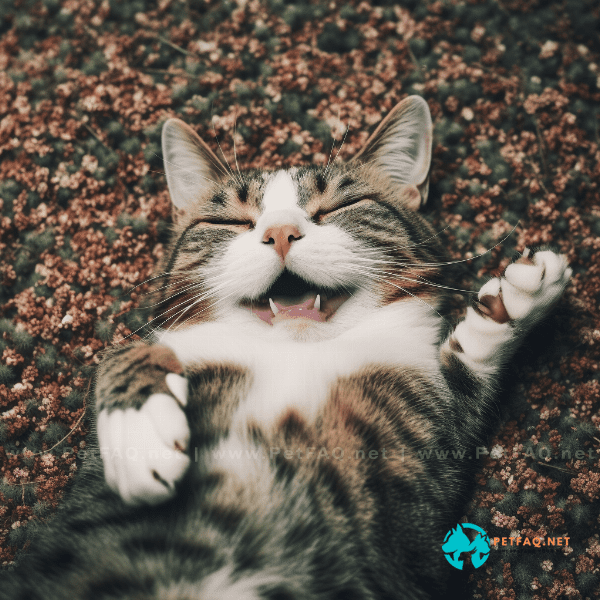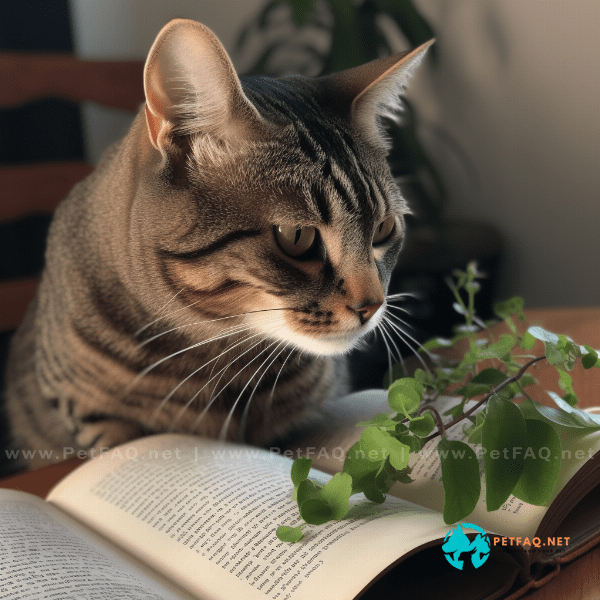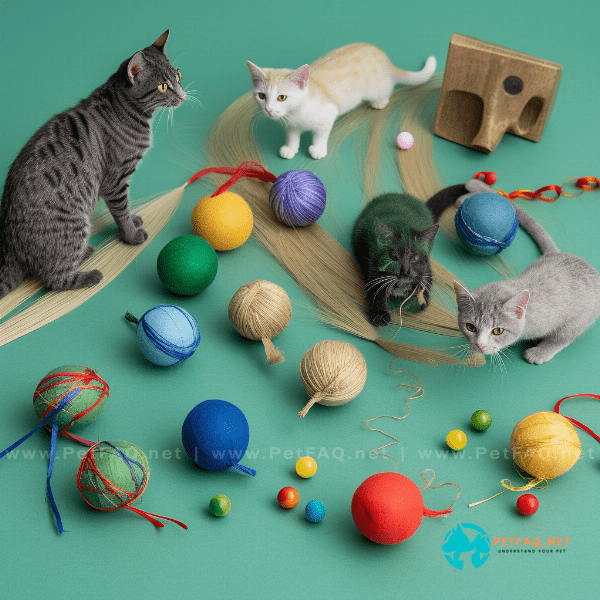Table of Contents
- Understanding the Limitations of Catnip and the Need for Alternatives
- Silver Vine: The Natural Catnip Alternative Your Feline Will Love
- Valerian Root: The Surprising Way to Keep Your Cat Calm and Relaxed
- Tatarian Honeysuckle: The Sweet-Smelling Alternative to Catnip
- How to Introduce and Use Catnip Alternatives with Your Cat
- Other Options for Cat Relaxation: Chamomile, Lavender, and More
- Conclusion: Finding the Best Catnip Alternatives for Your Feline Friend.
Understanding the Limitations of Catnip and the Need for Alternatives
Cats love catnip, but it may not be the best choice for every feline. Understanding the limitations of catnip and the need for alternatives can help pet owners make informed decisions when it comes to their cat’s wellbeing.
First, it’s important to note that not all cats react to catnip. While some cats go crazy for it, others may not show any interest at all. This is because catnip’s active ingredient, nepetalactone, affects cats differently based on their genetics. So, if your cat doesn’t react to catnip, don’t worry! There are plenty of other options out there.
Another limitation of catnip is that its effects are short-lived. Cats may become hyperactive and playful for a few minutes, but then the effects wear off, leaving them bored or even agitated. This can be frustrating for cats who want to continue playing, but it can also be frustrating for their owners who have to deal with the aftermath.
Additionally, some cats may have adverse reactions to catnip, such as vomiting, diarrhea, or lethargy. If your cat experiences any of these symptoms after being exposed to catnip, it’s important to discontinue use immediately and seek veterinary attention if necessary.
For these reasons, it’s important to consider alternatives to catnip that can provide similar benefits without the drawbacks. Fortunately, there are plenty of options to choose from, including silver vine, valerian root, and tatarian honeysuckle. By understanding the limitations of catnip and exploring alternatives, pet owners can keep their cats happy, healthy, and entertained.
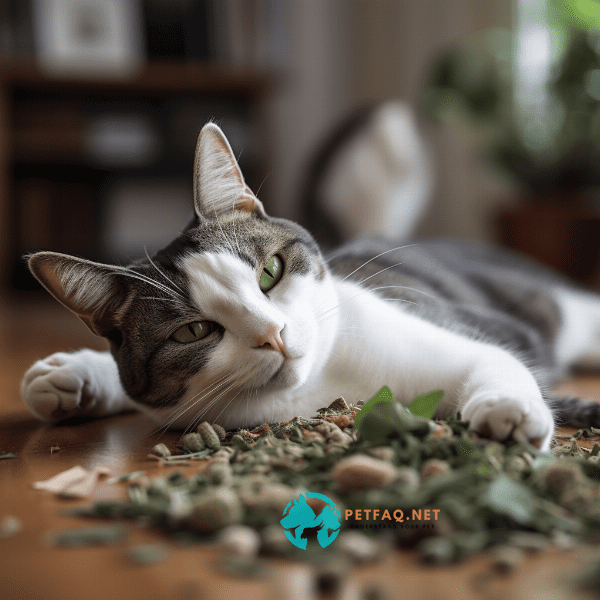
Silver Vine: The Natural Catnip Alternative Your Feline Will Love
If you’re looking for a natural alternative to catnip that your feline friend will love, consider giving silver vine a try. Silver vine is a plant that’s native to Asia and is part of the kiwi family. Like catnip, it contains an active ingredient that affects cats, but unlike catnip, it’s much less well-known in the Western world.
The active ingredient in silver vine is actinidine, which is similar to nepetalactone found in catnip but is more potent. This means that even cats who don’t react to catnip may respond positively to silver vine. In fact, some experts believe that silver vine may be even more effective than catnip in stimulating a cat’s pleasure receptors.
When exposed to silver vine, cats may exhibit behaviors similar to those seen with catnip, such as rolling around, licking, and rubbing against the plant. However, the effects of silver vine can last much longer than catnip, up to 30 minutes to an hour.
As with any catnip alternative, it’s important to use silver vine in moderation and under supervision. While it’s generally safe for cats, some may have adverse reactions or become overstimulated. If your cat shows any signs of distress or discomfort, discontinue use immediately.
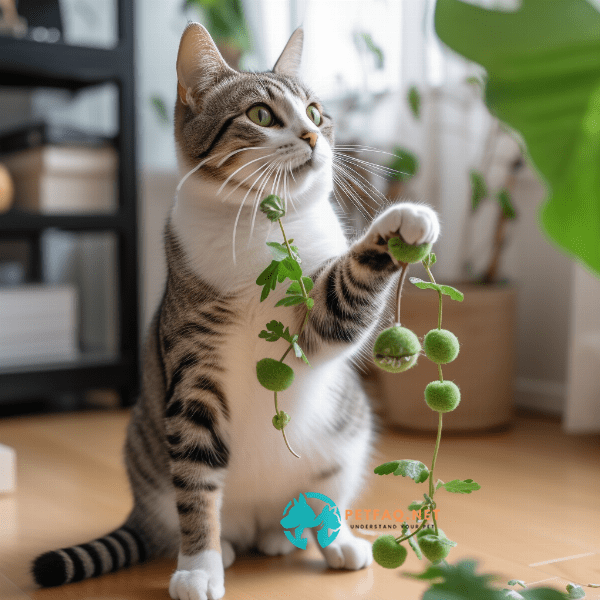
Valerian Root: The Surprising Way to Keep Your Cat Calm and Relaxed
If you’re looking for a way to keep your cat calm and relaxed without the use of prescription medication, you may want to consider valerian root as an alternative. Valerian root is a natural sedative that’s been used for centuries to promote relaxation and reduce anxiety in humans, but it can also be effective for cats.
When given to cats, valerian root can have a calming effect that can help reduce stress and anxiety, which can be especially helpful for cats who are prone to nervousness or aggression. It works by increasing the levels of a neurotransmitter called GABA, which helps to regulate mood and reduce anxiety.
Valerian root can be given to cats in a variety of forms, including capsules, tablets, and tinctures. It can also be found in some cat toys, which can be especially helpful for cats who are anxious during car rides or trips to the vet.
While valerian root is generally safe for cats, it’s important to use it in moderation and under the guidance of a veterinarian. Some cats may have adverse reactions to valerian root, such as vomiting, diarrhea, or lethargy, and it should not be given to cats who are pregnant or nursing.
In conclusion, valerian root is a natural and effective alternative to prescription sedatives that can help keep your cat calm and relaxed. By understanding the benefits and limitations of valerian root and using it in moderation, pet owners can provide their feline friends with a safe and effective way to reduce stress and anxiety.
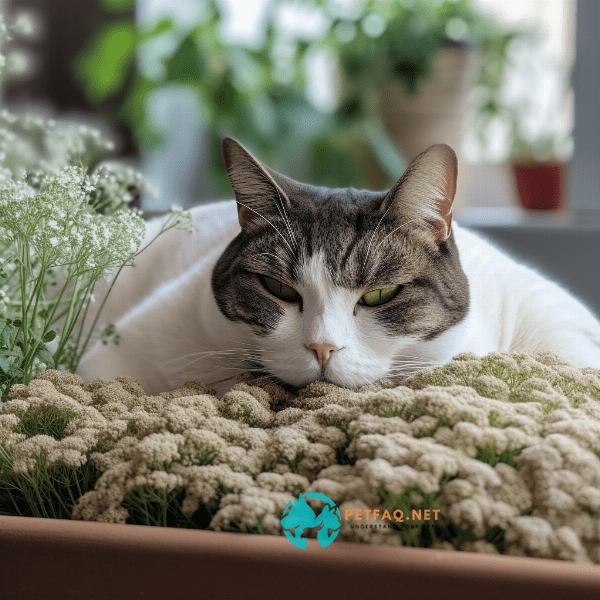
Tatarian Honeysuckle: The Sweet-Smelling Alternative to Catnip
Tatarian honeysuckle is a sweet-smelling plant that’s been used for centuries in traditional Chinese medicine to treat a variety of ailments. Recently, it’s gained popularity as an alternative to catnip, thanks to its pleasant scent and stimulating effects on cats.
Tatarian honeysuckle contains a compound called nepetalactol, which is similar to nepetalactone found in catnip. This compound can trigger a similar response in cats, causing them to become playful and excited. However, unlike catnip, the effects of Tatarian honeysuckle can last much longer, up to several hours.
Tatarian honeysuckle can be given to cats in a variety of forms, including dried leaves and flowers, as well as toys infused with the plant’s essential oils. Some cats may prefer one form over another, so it’s worth experimenting to see what your cat likes best.
One advantage of Tatarian honeysuckle is that it’s non-addictive, unlike catnip, which can cause some cats to become dependent on it for stimulation. Additionally, Tatarian honeysuckle has been shown to have anti-inflammatory properties, which can be beneficial for cats with joint pain or other inflammation-related conditions.
As with any catnip alternative, it’s important to use Tatarian honeysuckle in moderation and under supervision. Some cats may have adverse reactions or become overstimulated, and it should not be given to cats who are pregnant or nursing.
In conclusion, Tatarian honeysuckle is a sweet-smelling and effective alternative to catnip that can provide hours of entertainment for your feline friend. By understanding the benefits and limitations of Tatarian honeysuckle and using it in moderation, pet owners can provide their cats with a safe and natural way to stay entertained and stimulated.
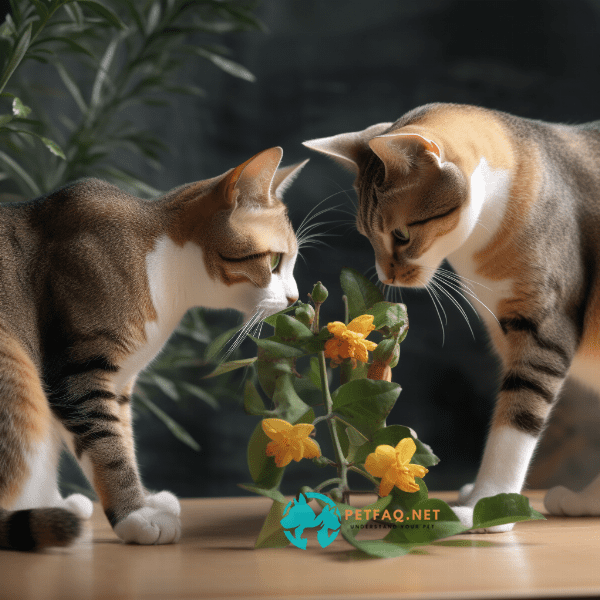
How to Introduce and Use Catnip Alternatives with Your Cat
Introducing and using Catnip Alternatives with your cat can be a fun and rewarding experience for both you and your furry friend. Here are some tips on how to do it safely and effectively:
1. Start with a small amount: When introducing a new catnip alternative, start with a small amount and see how your cat reacts. Some cats may be more sensitive than others, so it’s important to monitor their behavior and adjust the amount accordingly.
2. Observe your cat’s reaction: Pay attention to your cat’s behavior when they’re exposed to the catnip alternative. Do they seem excited and playful, or do they seem anxious or overstimulated? If your cat is showing signs of discomfort or agitation, it may be best to try a different alternative.
3. Use catnip alternatives as a reward: Using catnip alternatives as a reward can be a great way to reinforce positive behavior in your cat. For example, you could give your cat a toy infused with Tatarian honeysuckle after they’ve used their scratching post or completed a training exercise.
4. Rotate catnip alternatives: Just like with regular catnip, cats can become desensitized to catnip alternatives if they’re exposed to them too often. To keep things interesting for your cat, try rotating between different catnip alternatives every few weeks.
5. Use catnip alternatives in moderation: While catnip alternatives are generally safe, it’s important to use them in moderation and under supervision. Some cats may have adverse reactions or become overstimulated, so it’s best to err on the side of caution.
By following these tips, you can introduce and use catnip alternatives with your cat in a safe and effective way. Whether you choose silver vine, valerian root, or Tatarian honeysuckle, these natural alternatives can provide hours of entertainment and stimulation for your furry friend.
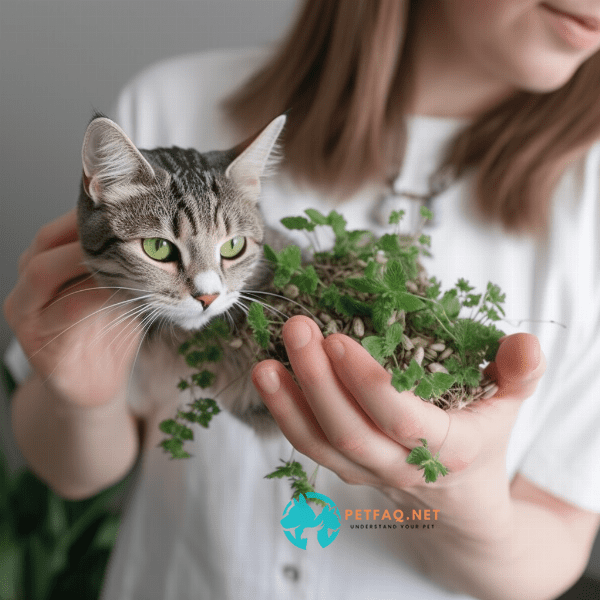
Other Options for Cat Relaxation: Chamomile, Lavender, and More
While silver vine, valerian root, and Tatarian honeysuckle are some of the most popular catnip alternatives, there are other natural options for cat relaxation as well. Here are a few:
1. Chamomile: Chamomile is a calming herb that’s often used to promote relaxation and relieve anxiety in humans. It can have similar effects on cats, and some pet owners have reported success using chamomile to calm their feline friends. You can brew chamomile tea and let it cool before offering it to your cat, or use chamomile essential oil in a diffuser or spray.
2. Lavender: Lavender is another herb that’s well-known for its calming properties. Some cats may enjoy the scent of lavender, and it can be used in a similar way to chamomile, either in the form of essential oil or dried lavender flowers. However, it’s important to use lavender in moderation, as some cats may be sensitive to its strong scent.
3. Cat thyme: Cat thyme is a type of thyme that’s been found to have a stimulating effect on some cats, similar to catnip. However, like catnip, not all cats will be affected by cat thyme, so it’s worth trying out in small amounts to see how your cat reacts.
4. Catnip alternatives infused toys: Apart from the natural herbs, there are also toys infused with calming and stimulating scents like honeysuckle, valerian root, chamomile, and lavender that can be offered to cats.
It’s important to note that not all cats will respond to these alternatives in the same way, so it’s worth experimenting to see what works best for your furry friend. Additionally, some cats may have allergies or sensitivities to certain herbs or essential oils, so it’s always a good idea to check with your vet before introducing any new relaxation techniques to your cat’s routine.
In conclusion, while catnip is a popular and well-known option for cat stimulation, there are several natural alternatives available that can provide similar benefits. Whether you choose chamomile, lavender, cat thyme, or another herb, these options can provide a safe and effective way to keep your feline friend entertained and relaxed.
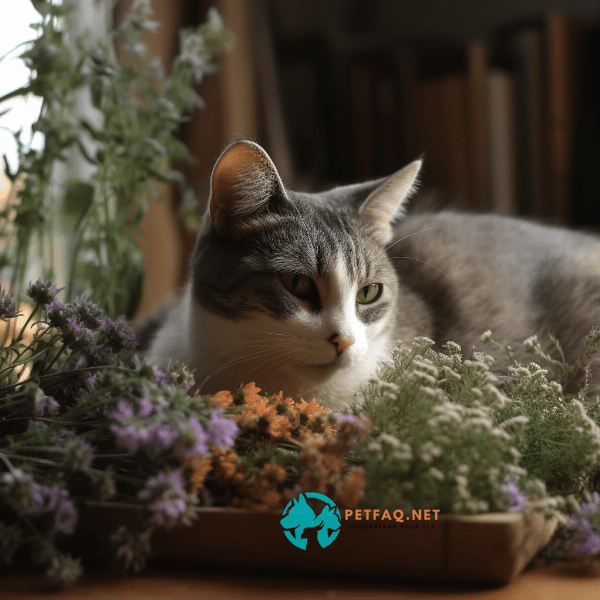
Conclusion: Finding the Best Catnip Alternatives for Your Feline Friend.
In conclusion, there are a variety of catnip alternatives available that can provide a safe and effective way to keep your cat stimulated, relaxed, and entertained. From silver vine and valerian root to Tatarian honeysuckle, chamomile, and lavender, there are many options to choose from.
When selecting a catnip alternative, it’s important to take into consideration your cat’s individual preferences and sensitivities. Not all cats will respond to these alternatives in the same way, so it’s worth trying out different options to see what your cat enjoys most.
It’s also important to use catnip alternatives in moderation and under supervision. While these natural herbs are generally safe, some cats may have adverse reactions or become overstimulated. As with any new addition to your cat’s routine, it’s always a good idea to check with your vet before introducing any new catnip alternatives.
Overall, catnip alternatives can be a fun and rewarding way to bond with your cat and provide them with the stimulation they need. By taking the time to understand your cat’s preferences and using these alternatives responsibly, you can help your furry friend stay happy and healthy for years to come.
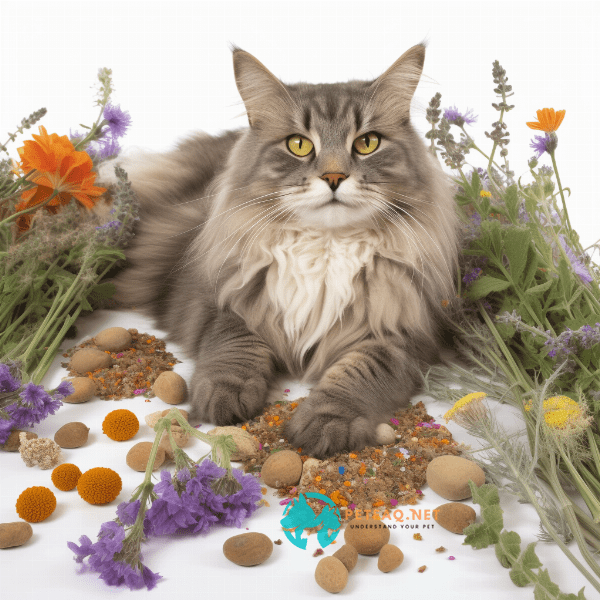
Frequently Asked Questions (FAQs) about Alternatives to catnip for cats:
1. What are some natural catnip alternatives?2. How do synthetic alternatives to catnip differ from natural ones?
3. Are there any DIY catnip alternative recipes that I can try at home?
4. How do catnip alternatives affect cats differently than catnip?
5. How can you train your cat to respond to alternative herbs or plants instead of catnip?

